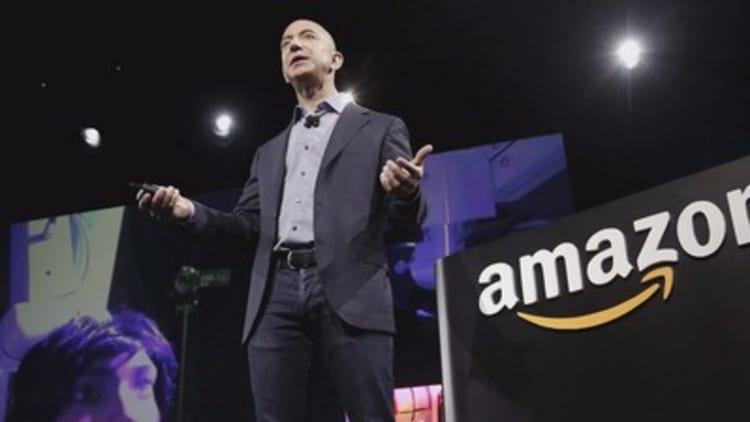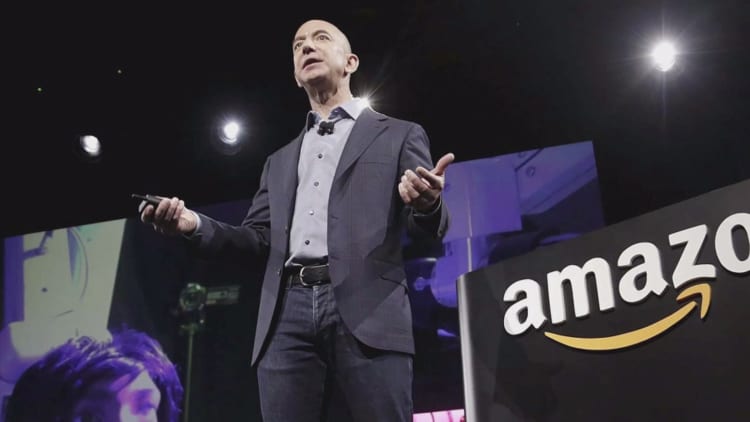
Amazon's explanation last week that it was closing Quidsi because the unit was unprofitable didn't sound much like Jeff Bezos. The Amazon founder is famous for operating retail businesses at such slim margins that rivals can't compete.
Quidsi employees had another reason to be surprised.
As recently as late 2016, at Quidsi's quarterly all-hands meeting in Jersey City, New Jersey, executives from Amazon headquarters in Seattle spoke to the unit's 250-plus workers and affirmed the parent company's commitment to Quidsi's business, according to multiple people who were in attendance. (Recode previously reported on some details of this meeting.)
One of the executives to present was John Boumphrey, Amazon's vice president who oversees baby products, and the direct boss of Quidsi CEO Emilie Arel
Yet last Wednesday, with the first quarter coming to a close, employees were informed that Amazon was shutting Quidsi down and laying off hundreds of workers, ostensibly because the division was unable to make a profit. The diapers, toiletries, beauty products and pet care items sold by the various Quidsi brands would all be available on Amazon.com, the company said.
Not everyone was shocked. Earlier in March, Quidsi's finance chief, Randy

Behind the scenes, the winding down of Quidsi had been quietly underway for over a year. Unlike shoe seller Zappos, which Amazon acquired in 2009 and has flourished as an established independent brand, Quidsi's commodity products play right into Amazon's core business.
In the fourth quarter of 2015, Amazon started redirecting inventory from Quidsi's three fulfillment centers -- in Nevada,
Quidsi's facilities were running out of capacity. The robots that ran through Quidsi's fulfillment centers, pulling goods from shelves and efficiently boxing them up, were owned by Amazon through the 2012 acquisition of robot maker Kiva Systems. Amazon was investing in improving the robots but directing those upgrades primarily to its own facilities, not Quidsi's, sources said.
Furthermore, from a customer perspective, Amazon preferred to keep buyers on its own website rather than on Quidsi's network of sites like Diapers.com and Soap.com. With its inventory fleeing to Amazon's warehouses and the Quidsi sites being de-emphasized, there was no longer a strategic reason to have a separate Quidsi operation.
"They didn't buy service with Quidsi, they bought domain names and customer lists," said Michael Pachter, an analyst at Wedbush Securities who has a buy rating on Amazon. "It was inevitable that both diapers and soap would be absorbed into Amazon's overall business, as there is no competitive advantage given up by doing so."
An Amazon spokesperson declined to comment.
Bezos vs. Lore
Amazon executives have not mentioned Quidsi on an earnings call since July 2015, and that was only in response to an analyst's question about recent management changes. Amazon's then-CFO Thomas Szkutak said, "We're pleased that business and the team -- our retail team works very closely with the Quidsi business and [we're] excited to have it as part of the Amazon team."
Quidsi management has always been a sensitive subject for Amazon and Bezos.
Marc Lore co-founded Quidsi in 2005 and waged a tough fight against Amazon in the categories of diapers and toiletries. Amazon responded by slashing prices on diapers, pressuring Quidsi's margins and making investors in the upstart reluctant to pour in more cash.
In 2010, a bidding war for Quidsi ensued between Amazon and Wal-Mart, with Bezos ultimately winning with a bid of $545 million. Lore left Amazon and Quidsi in 2013, then turned around and raised billions of dollars for his next venture, Jet.com, a broader e-commerce effort that was originally intended to work on a membership basis, sort of like Costco.
Wal-Mart bought Jet last year for $3.3 billion, putting Lore in charge of the discounter's e-commerce efforts and pitting him squarely against Bezos.
Analysts and former employees said Bezos's personal rivalry with Lore could be one reason why the Amazon CEO shuttered the Quidsi business.
Five days after employees were told of the shutdown, Quidsi's website continues to tell a different story. It says the unit has 1,100 employees, a number that presumably includes warehouse jobs, and is "still growing!" As of Monday morning, the site had 16 job listings, including for a buying manager, director of mobile apps and multiple software engineers.
We've also asked Amazon how it plans to repurpose Quidsi's fulfillment centers, and haven't yet heard back.
Update: After our story ran Amazon appears to have removed the Quidsi website and redirected traffic to Amazon.


